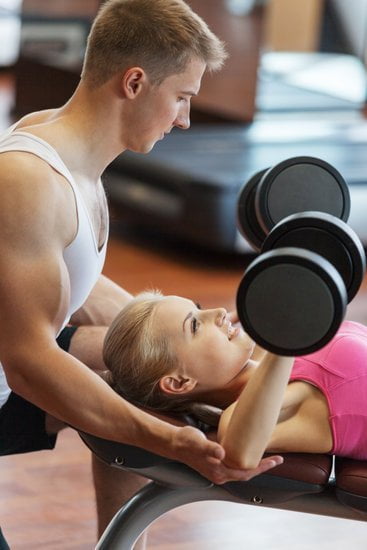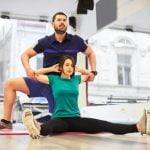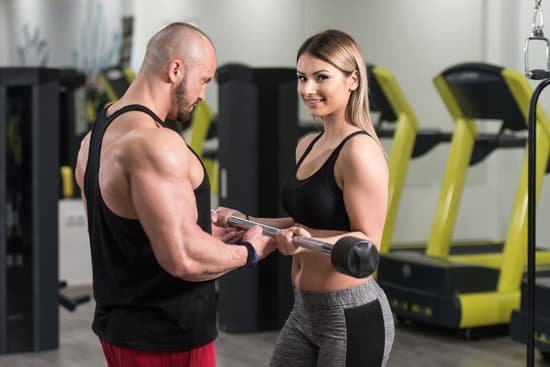Physical fitness plays a crucial role in maintaining overall health and well-being. Engaging in regular exercise not only helps to improve physical strength and endurance but also contributes to mental health and overall quality of life. In this article, we will explore examples of exercises for physical fitness across various categories to help you create a well-rounded workout routine.
When it comes to physical fitness, incorporating a variety of exercises is key to achieving optimal results. From cardiovascular activities like running, cycling, and jumping jacks to strength training exercises such as squats, push-ups, and dumbbell exercises, there are numerous options available for individuals looking to improve their fitness levels. Flexibility exercises like yoga, stretching, and Pilates are essential for preventing injuries and improving range of motion.
In addition to traditional forms of exercise, plyometric exercises like box jumps, burpees, and jump squats can add an explosive element to your workouts. Balance and stability exercises such as single-leg balance, plank variations, and stability ball exercises are vital for enhancing coordination and core strength. By incorporating interval training workouts that include high-intensity exercises like sprints, burpees, and mountain climbers, individuals can boost their cardiovascular fitness levels effectively.
Cardiovascular Exercises
Physical fitness is a crucial aspect of overall health and well-being. Cardiovascular exercises play a significant role in improving cardiovascular health, increasing endurance, and burning calories. These exercises involve continuous movements that elevate the heart rate, promoting better circulation and oxygen flow throughout the body. Incorporating cardiovascular exercises into your fitness routine can help reduce the risk of heart disease, improve lung capacity, and boost energy levels.
Benefits of Cardiovascular Exercises
Engaging in regular cardiovascular exercises offers numerous benefits beyond just burning calories. It helps strengthen the heart muscle, lowers blood pressure, and improves cholesterol levels. Additionally, these exercises can enhance mood by releasing endorphins, also known as “feel-good” hormones. Whether it’s running, cycling, or jumping jacks, these activities not only benefit your physical health but also contribute to mental well-being.
Examples of Cardiovascular Exercises
There are several examples of exercises for physical fitness that fall under the category of cardiovascular workouts. Running is a popular choice that requires no special equipment and can be done almost anywhere. Cycling is another excellent option that provides a low-impact way to get your heart pumping while enjoying the outdoors.
Jumping jacks are a simple yet effective exercise that can be incorporated into any workout routine to get your blood flowing and increase your heart rate. Consider including these and other cardiovascular exercises in your fitness regimen to reap their full benefits.
Strength Training Exercises
Squats are a fundamental lower body exercise that targets multiple muscle groups, including the quadriceps, hamstrings, glutes, and core. By performing squats regularly, you can strengthen your lower body muscles, improve your balance and stability, and enhance functional movement patterns. Variations like goblet squats, sumo squats, or plyometric jump squats can add intensity to your workout routine.
Push-ups are a classic bodyweight exercise that primarily targets the chest, shoulders, triceps, and core muscles. They are effective for building upper body strength, improving muscular endurance, and enhancing overall upper body power.
You can modify push-ups based on your fitness level by doing incline or decline push-ups or trying different hand placements to target specific muscle groups. Additionally, incorporating variations like diamond push-ups or staggered hand push-ups can challenge different muscle groups for a well-rounded workout.
Dumbbell exercises are versatile strength training options that allow you to target specific muscle groups while working on unilateral strength imbalances. Exercises such as bicep curls, shoulder presses, lunges with dumbbells.
and rows can help develop muscle definition and functional strength. Using dumbbells in your workouts also engages stabilizing muscles as you perform various movements. Make sure to choose appropriate weight increments to challenge yourself while maintaining proper form throughout each exercise for optimal results in building muscle strength.
Flexibility Exercises
Flexibility is a crucial component of physical fitness that is often overlooked but plays a significant role in preventing injuries and improving overall performance. Being flexible allows for a greater range of motion in joints, reduces muscle stiffness, and enhances posture and mobility. Incorporating flexibility exercises into your regular workout routine can help you move more efficiently, decrease the risk of strains or tears, and aid in recovery after intense workouts.
Yoga
Yoga is an excellent practice for improving flexibility, balance, and strength. The various poses and stretches in yoga target different muscle groups while also focusing on breath control and relaxation. Poses like Downward Dog, Warrior I, and Cobra pose help elongate muscles, increase joint mobility, and improve overall flexibility. Additionally, practicing yoga regularly can enhance body awareness and mind-body connection, promoting better coordination and reducing stress levels.
Stretching
Stretching is a fundamental aspect of any fitness routine as it helps improve flexibility and reduce muscle tightness. Static stretching involves holding a stretch for a specific amount of time to lengthen muscles gradually. Dynamic stretching involves moving parts of your body through a full range of motion to warm up muscles before exercise or sports activities. Including both types of stretching in your workout plan can improve circulation, prevent injury, and enhance muscle recovery post-workout.
Pilates
Pilates focuses on core strength, stability, balance, coordination, and flexibility through controlled movements that target deep muscles. Exercises such as the Hundred or Roll-Up engage the core while simultaneously working on improving flexibility in various body parts. Pilates movements emphasize proper alignment and breathing techniques to support overall body health and function.
Adding Pilates to your fitness regimen can help develop long lean muscles while increasing flexibility to move efficiently in everyday activities or sports performance. Remember to always listen to your body’s limits when practicing flexibility exercises to avoid overstretching or causing harm. Incorporating these examples of exercises for physical fitness will not only enhance your flexibility but also contribute to improved overall health and well-being.
Plyometric Exercises
One popular plyometric exercise is box jumps. This exercise involves jumping onto an elevated platform like a sturdy box or bench using both feet at the same time. Box jumps target the lower body muscles such as quadriceps, hamstrings, and glutes while also engaging core muscles for stabilization. Additionally, this exercise helps improve coordination and balance by requiring precise movements to land safely on the box.
Another effective plyometric exercise is burpees. Burpees are a full-body workout that combines elements of strength training and aerobic conditioning. This exercise starts with a squat position and then quickly transitions into a plank position followed by a push-up. After the push-up, you jump back to the squat position before jumping explosively into the air with arms raised overhead. Burpees target multiple muscle groups simultaneously, making it an efficient exercise for building strength and endurance.
Lastly, jump squats are a dynamic plyometric exercise that strengthens the lower body muscles while also improving cardiovascular fitness. To perform jump squats, start in a squat position with feet shoulder-width apart, then explosively jump vertically as high as possible while extending your arms overhead.
As you land back in the squat position, focus on controlling your descent to engage muscles eccentrically. Jump squats enhance explosive power in the legs and help increase vertical jump height for athletes in sports like basketball or volleyball.
| Plyometric Exercise | Benefits |
|---|---|
| Box Jumps | Targets lower body muscles; improves coordination and balance |
| Burpees | Full-body workout targeting multiple muscle groups; enhances strength and endurance |
| Jump Squats | Strengthens lower body muscles; increases explosive power and vertical jump height |
Balance and Stability Exercises
To incorporate balance and stability exercises into your workout regimen, consider including the following examples:
- Single-leg balance: Stand on one leg for 30 seconds to one minute, then switch legs. To increase difficulty, try closing your eyes or incorporating small movements like hip circles.
- Plank variations: Planks are great for building core strength, but adding movements like plank shoulder taps or plank twists can challenge your stability further.
- Stability ball exercises: Using a stability ball can add an element of instability to exercises like hamstring curls, squats, or push-ups. This engages more muscles to maintain balance while performing the movement.
Incorporating these balance and stability exercises into your fitness routine can help improve posture, reduce the risk of common injuries, and enhance overall physical performance. Whether you’re a seasoned athlete or just starting your fitness journey, working on balance will benefit your body in various ways. Start with simple exercises and progress to more challenging variations as you build strength and stability in key muscle groups.
Interval Training Workouts
High-Intensity Interval Training (HIIT) has gained popularity in recent years due to its effectiveness in burning calories and improving cardiovascular fitness in a shorter amount of time. This type of workout involves alternating between bursts of intense exercise and periods of rest or lower intensity.
The main benefit of HIIT is its ability to increase your metabolism and burn fat even after you’ve finished working out. Examples of exercises for physical fitness in a HIIT workout include sprints, burpees, mountain climbers, jumping lunges, and kettlebell swings.
A sample HIIT workout could be 20 seconds of maximum effort sprints followed by 10 seconds of rest, repeated for a total of 8 rounds. Another example is performing 45 seconds of burpees at a fast pace followed by 15 seconds of rest for 5 rounds.
Mountain climbers can also be incorporated by doing 30 seconds of mountain climbers followed by 30 seconds of rest, repeated for 4 sets. These intervals can be adjusted based on your fitness level and goals.
Incorporating HIIT workouts into your fitness routine can help boost your endurance, increase your anaerobic capacity, and save time compared to traditional steady-state cardio sessions. It is essential to perform a proper warm-up before starting a HIIT session to prevent injuries and cool down afterward to help your body recover.
Whether you’re a beginner or experienced exerciser, including HIIT workouts with exercises like sprints, burpees, and mountain climbers can add variety to your training regimen and lead to significant improvements in overall physical fitness.
| Exercise | Description |
|---|---|
| Sprints | Running at maximum speed for short intervals followed by rest periods |
| Burpees | Combining squat thrusts with push-ups and jumps for a full-body workout |
| Mountain Climbers | Bringing the knees toward the chest while in a plank position to engage the core muscles |
Cooling Down and Stretching
After a rigorous workout session that includes various types of exercises for physical fitness, it is crucial to cool down properly to allow your body to ease back into a resting state. Cooling down helps lower your heart rate, prevent blood pooling in the extremities, and reduce muscle soreness.
It allows your body to transition smoothly from intense activity to a state of relaxation. One effective way to cool down is by engaging in low-intensity aerobic exercises such as walking or gentle cycling for about 5-10 minutes.
Following a proper cool-down, stretching exercises play a vital role in improving flexibility, reducing muscle tension, and preventing injuries. Incorporating static stretches that target major muscle groups can help increase the range of motion in your joints. Examples of stretching exercises include hamstring stretches, quadriceps stretches, calf stretches, and shoulder stretches. Hold each stretch for at least 15-30 seconds without bouncing to allow the muscles to relax and lengthen gradually.
In addition to static stretching, dynamic stretching can also be beneficial after a workout. Dynamic stretching involves moving parts of your body through a full range of motion in a controlled manner. This type of stretching helps improve circulation, enhance joint mobility, and prepare your muscles for future movements.
Examples of dynamic stretches include leg swings, arm circles, torso twists, and walking lunges with an overhead reach. By incorporating both static and dynamic stretching exercises into your post-workout routine, you can enhance flexibility and reduce the risk of muscle stiffness or injury over time.
Conclusion
In conclusion, achieving physical fitness is crucial for our overall health and well-being. By engaging in a variety of exercises that target different aspects of fitness, we can improve our cardiovascular health, build muscle strength, enhance flexibility, boost explosive power, work on balance and stability, and benefit from high-intensity interval training.
By incorporating cardiovascular exercises like running, cycling, and jumping jacks, we can improve our heart health and endurance. Strength training exercises such as squats, push-ups, and dumbbell workouts help us build muscle mass and increase our metabolism. Flexibility exercises like yoga, stretching routines, and Pilates are essential for preventing injuries and improving range of motion.
Additionally, plyometric exercises such as box jumps, burpees, and jump squats can enhance our explosiveness while balance and stability exercises like single-leg balance drills, plank variations, and stability ball exercises aid in improving coordination and core strength. Lastly, high-intensity interval training (HIIT) with workouts involving sprints, burpees, and mountain climbers can elevate our fitness levels to new heights.
In summary, by incorporating a mix of these exercises into our fitness routine regularly, we can achieve a well-rounded approach to physical fitness that benefits both our body and mind.
Frequently Asked Questions
What Are Examples of Exercise for Fitness?
Exercise for fitness can include a variety of activities such as running, swimming, biking, weightlifting, and yoga. Each of these exercises focuses on different aspects of physical health and can help improve overall fitness levels.
What Are the 5 Examples of Physical Fitness?
The five examples of physical fitness are cardiovascular endurance, muscular strength, muscular endurance, flexibility, and body composition. These components work together to ensure the body is functioning optimally and can help prevent injuries.
What Is 10 Physical Fitness?
The term “10 physical fitness” doesn’t have a standard or commonly recognized definition within the realm of fitness. It’s possible that it could refer to a rating system for assessing overall physical fitness levels but additional context would be needed for a more specific answer.

Passionate about providing useful information to anyone with an interest in the field of Personal Training, I strive to pass on to our readers quality information and to answer any questions about Personal Trainers, the work they do and how to become one.





